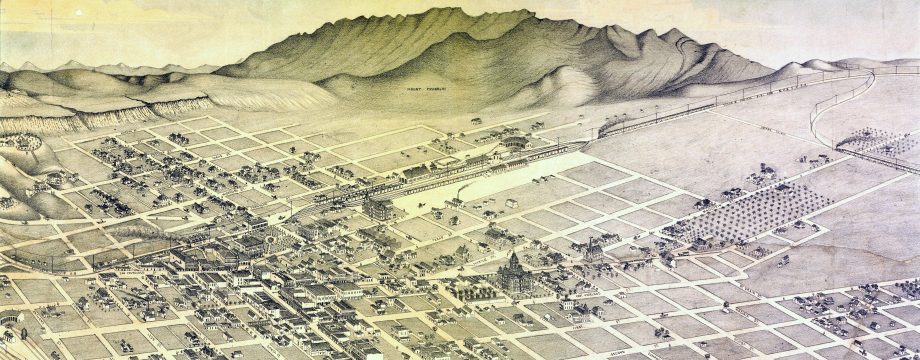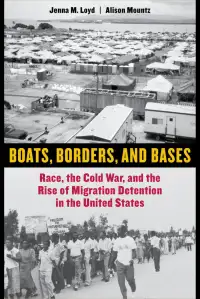By Vane Pérez
The history of migrant labor in the United States is intrinsically linked to Mexico. An example of this relationship is the Bracero program which ran from 1942 to 1964. The program is crucial in understanding current immigration policies, new guestworker program proposals, and advocacy for immigrant laborers. Much of the Bracero generation is now gone. The youngest men who worked the program’s final years are now at least in their seventies; what is left of their stories is largely in the words of their families. The desire to preserve these personal histories has struck me. These men serve as a heartbreaking example of people defined by their hardest moments ― not as people who continued to grow, create, fight, and inspire for the rest of their lives. What does it mean for Mexican Americans to engage with the histories and dialogues of braceros only through the lens of suffering? Despite dehumanizing conditions and sociocultural barriers, braceros crafted their legacy in the fabric of both American and Mexican society. By looking beyond their status as laborers, it becomes clear that braceros were people who led multi-dimensional and vibrant lives. They passed down valuable oral histories documenting their respective lifeworlds. Analyzing these stories is a small step toward preserving the history of braceros and undoing the lasting trauma that the program caused.
The Bracero program was a joint effort program under the U.S. State Department, the Department of Labor, and Immigration and Naturalization Service between the U.S. and Mexico implemented to relieve agricultural and railroad industry labor shortages during World War II.[1] The Bracero program caused immeasurable damage to the physical and mental wellbeing of the roughly 4.6 million Mexican workers it brought to the U.S.[2] The program was a sought-after opportunity for the mainly indigenous, rural, and/or uneducated men the corrupt selection process targeted to send home major earnings for their families. If these men had the chance to be examined for the job, they were put through incredibly invasive physical examinations and even sprayed down with DDT (a pesticide that was already being studied at the time for its harmful effects). Once on site, the men employed in the Bracero program faced squalid living conditions, dangerous work, unjust wages, wage garnishing, little to no healthcare, employer intimidation, and discrimination from neighboring white populations. Strikes organized to demand better wages, safety, or other measures were met with swift (occasionally violent) retribution from employers and officials.[3]
Yet another frustrating injustice of the Bracero program was uncovered as they returned home. From the inception of the program until the 1950’s, the U.S. and Mexican governments garnished ten percent of worker’s wages. These forced savings were to be held in Mexican banks, mainly Banco Rural de Credito Nacional (BanRural), to accrue interest and be given to the workers upon their return home as a nest egg and incentive to return to Mexico. This was not the case for many braceros. Though over $32 million was collected and deposited into American banks (primarily Wells Fargo) and later transferred to BanRural, there were many reasons why these men never received their rightful earnings.[4] Some never returned to Mexico to claim the funds; others were told by BanRural the whereabouts of the money were unknown. Some bracerosheard how difficult this money was to claim and never tried, while others still were never informed of the forced savings. Although audits by the Mexican and American governments provided extensive documentation of the amount of money each bracero was owed and complaints of missing money, the records eventually disappeared and were not recovered in the documents BanRural left behind when it closed.[5] These blatant abuses inspired powerful resistance from both braceros and their families during the program and in the ensuing decades.
Although the Bracero Program ended and all but erased its paper trails, it undeniably shaped the way we (U.S. citizens, Latinx people, Mexican Americans, etc.) talk about immigration and labor. Outside of legislative implications, the Bracero Program is something that fundamentally changed family structures and created generational trauma. Using my experiences as a framework for the sustained effects from generation to generation, it is clear just how deeply the consequences of the program have reverberated through my family and fundamentally shifted the way we communicate. Writing about the Bracero Program has given me the opportunity to dive into my family history and open a dialogue with the youngest generation of my family that I hope will allow us to move forward with a deeper understanding of what it means to heal and a clearer, multidimensional image of the migrants in our lives.
I was inspired to dig into the story of braceros when I encountered two poems written in the 1940’s. The poems, Perdon by Luis Solorio and Oda A Cucamonga by Roberto García, rocked me to my very core with the realization that braceros are so much more than labor, so much more than brazos. The poems were resonant voices whispering to my heart from over seventy years ago and lasting proof of literary tradition crafted by braceros; something I had never expected to exist. In a truly serendipitous moment, I encountered the following lines of poetry in Oda A Cucamonga:
siempre de ti me acordaré dichoso
si el destino nos separa muy distantes.
A ti, jardín, imperio de belleza
con huertas de frondosos limonares
te sublimo apesar de mi torpeza
con mis versos, recuerdos, y cantares[6]
A rough translation being, ‘I will always remember you happily if fate separates us. You, garden, empire of beauty with orchards of lush lemon trees. I sublimate you, despite my clumsiness, with my verses, memories, and songs.’ This declaration that, despite imperfect words, the speaker will continue to remember and celebrate their past ignited me with passion.
Allow me, for a moment, to paint a portrait of myself: a young, queer, second generation Mexican American artist raised in the Midwest. As a child growing up in a turbulent environment, creativity was my greatest boon. I wrote poems until my fingers had calluses; I drew, sang, read, and learned every craft I possibly could for the sake of distraction. Now, if I may, allow me to paint a portrait of my grandfather. Through the rosy tint of nostalgia, I would describe him as a mystery. In my fondest memory he was asleep on the sidewalk in front of his home, sombrero over his face, bible splayed open on his chest. In many ways, this is what the children, grandchildren, and even siblings and spouses have left of the braceros in their lives: tired, enigmatic men, sometimes quiet, sometimes not, but with entire swaths of their lives untold.
What little information I have from my abuelo has been hard-won: pulled like teeth from my father in his few vulnerable moments just as I know he had done with his father in his youth. My father and his father were migratory workers. I only ever got to know them in the cherished moments that they were not working andhad the emotional energy to talk about themselves. Now, I know them both to a fuller extent. I know they are creative men. I know they love music; I know now that they are the source of my humor. Though my father was not a bracero, it is clear how deeply he and his eleven siblings were affected by being raised by parents who endured widespread, generational trauma. This is true of most, though not all, of the people I have had discussions with about stories of the braceros in their lives.
I do not wish to remember my grandfather as a man who suffered. I do not believe trauma is necessary to make one stronger. I do wish to remember him fully; to celebrate him as a man of many qualities. This is only possible by excavating his history and adjusting the way I frame his narrative. Throughout my research, I have had opportunities to speak with family about the history of Latinx people, but more specifically, Mexican people in the United States. The more we addressed painful facts, the more my uncles, cousins, siblings, friends, and I understood about ourselves. I have witnessed deep hunger in the hearts of these people― the hunger for truth, for change. With so many Latinx people living tasked with the incomprehensible weight of having a ‘better life’ than that of their forebearers, our past has become lost in the pursuit of the future.
Seventy-nine years after its inception, the Bracero program continues to shape lives. Though one can choose to focus on the negative effects of the program, recognizing the people involved in their entirety is the beginning of moving on from these effects. Drawing inspiration from the resilience and creativity of braceros can fuel transformative justice and mitigate the harm created by the program. Though Latinx people may feel pressured to work toward a better future, recognizing the roots of intergenerational trauma is the missing link that is crucial in making these futures truly worth reaching.
Bibliography
Gamboa, Erasmo. 1987. “Braceros in the Pacific Northwest: Laborers on the Domestic Front, 1942-1947.” Pacific Historical Review 378-398.
García, Mario T. 1984. “BRACERO POETRY OF THE 1940S: TWO SAMPLES.” Bilingual Review / La Revista Bilingüe 11 (no. 3): 45-48.
Loza, Mireya. 2016. Defiant Braceros: How Migrant Workers Fought for Racial, Sexual, and Political Freedom. Chapel Hill: University of North Carolina Press.
Osorio, Jennifer. 2005. “Proof of a Life Lived: The Plight of The Braceros and What It Says About How We Treat Records.” Archival Issues 95-100.
Thompson, Charles D. 2017. “Faces of Time: The Braceros of Ciudad Juárez.” Southern Cultures 23 (no. 2): 97-112.
[1] Erasmo Gamboa, Braceros in the Pacific Northwest, 379.
[2] Jennifer Osorio, Proof of a Live Lived, 95.
[3] Erasmo Gamboa, Braceros in the Pacific Northwest, 382.
[4] Jennifer Osorio, Proof of a Life Lived, 97.
[5] Jennifer Osorio, Proof of a Life Lived, 97.
[6] Mario Garcia, Bracero Poetry of the 1940s, 47-48.


